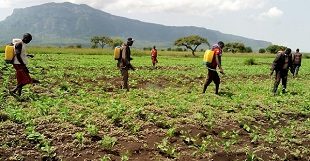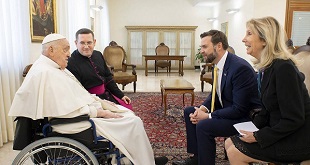
Catholic Relief Services has worked in Uganda since 1965 in agriculture, microfinance and agriculture sectors, among others. Country Representative, Niek de Goeij, spoke to The Independent’s Isaac Khisa about their efforts to promote ICT for development.
First, recently you held a three-day international conference on ICT4D in Kampala. How significance was the conference to Uganda’s economy?
ICT4D stands for Information and Communication Technology for Development. It is basically the use of digital technologies to improve the future for the poor and marginalized. ICT4D is an annual event founded by CRS together with various regional and global partners. In Uganda, we have technology innovation in agriculture, health, emergency response among others some of which have been developed by Ugandans. Participants at the conference, including Ugandans, got to share how they use innovations in digital technology for the benefit of their work. We also heard from ICT companies and development professionals how they adopt, adapt, or completely reengineer to integrate ICT into demand-driven solutions for local and global challenges. Uganda hosted the conference because it is at the forefront of utilising ICT for development.
Catholic Relief Services has been organising ICT4D conferences for the 11th time now. What have been the impact so far?
CRS started ICT4D to improve our work because we wanted to improve older, paper-based processes, have better quality data, and be more accountable and transparent to our donors and those we serve. But every year we have seen the technologies change and we have realized that ICT4D is empowering the people we serve to be more independent, self-sufficient and successful, rather than tools for international organizations like Catholic Relief Services. We still use ICT4D in a wide range of projects including emergency response, agriculture and health. Early this year in Uganda, for example, we distributed android tablets to 370 social workers across the country through our 4Children program. These tablets are equipped with legal policies and frameworks, learning and reporting tools, and contacts of various officials. We have already registered a great success as social workers have reported back to us saying they can now refer to laws and policies in real time by just a click away. But the real impact of the conference is that it attracts over 900 professionals from the private sector, governments, donor and NGO community to share ideas and products, and take them to scale. This sharing, testing, networking and developing of new ideas and approaches is what brings real impact for people on the ground.
What is your assessment of ICT usage in Uganda to achieve economic development?
Uganda is on a good trend when it comes to adoption of ICT4D and it is going to help in moving the country forward. Ugandans seem to run with technology as there is a vibrant ICT entrepreneurial start up sector in Kampala. We also see broader adoption of basic ICT across the country especially with the availability of internet. The government need to keep on providing a regulatory framework that enables innovation and creativity in the private sector.
What are some of the challenges, if any, that the local population face to embrace ICT for development?
Broadband infrastructure is still low in Uganda. Not all Ugandans have access to internet and when connected, the cost of internet service is still high. In the mobile sector, for instance, only 45 percent of the country has 3G coverage. Ugandans and especially the youth are eager to adopt ICT4D, but access remains a challenge – which actually includes accessing the basics of internet capable phones.
Five years ago, you partnered with Farmer to Farmer to improve farmer’s productivity and grow agribusiness. How has the initiative performed?
Farmer-to-Farmer is a people-to-people flagship program of the USAID that promotes agricultural sector development. The program provides technical assistance from U.S. volunteers to farmers, farm groups, agribusinesses, and other agriculture sector institutions in developing and transitional countries. CRS Uganda between 2013 -2018 ran the Farmer to Farmer program in Central, East, North East and South Western Uganda. The program benefitted 13,258 farmers as direct beneficiaries (51 percent women) with the support of 132 volunteers. Some key achievements include: Farmer organizations that received and adopted volunteer technical training and recommendations registered 20-30% increase in yields per acre due to better agronomic practices, 60% reduction in post-harvest losses due to improved post-harvest management practices; and rural financial institutions (SACCOs) that received F2F technical assistance registered average 65% increase in share capital with more than double increase in savings volumes. Through volunteer trainings and adoption of recommendations from tailored technical assistance that addresses issues of climate change, land degradations, pests and diseases, 202,388 Ha of land was brought under improved production management and 37,010 Ha under improved natural resource management.
What next now that the project came to an end in 2018?
Having successfully completed the first cycle of the project (2013-2018), CRS Uganda has been awarded a second cycle of F2F program running 2019 -2023. Uganda is part of CRS global F2F program, implemented in six countries including Rwanda.
In consultation with the agriculture ministry, the local USAID mission, and other key stakeholders in the agriculture sector; the Uganda F2F program is providing technical assistance to the livestock and agribusiness value chains.
****
 The Independent Uganda: You get the Truth we Pay the Price
The Independent Uganda: You get the Truth we Pay the Price



